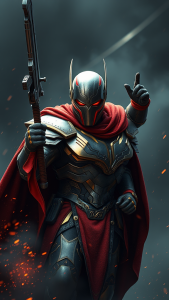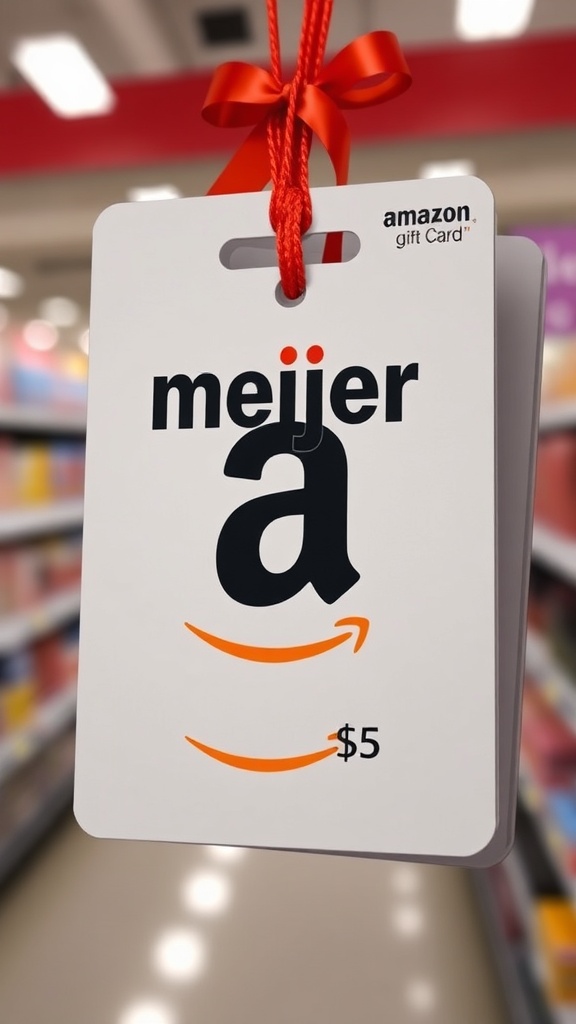Exploring the Role of a Hero in Web Design
In today’s digital world, a hero section plays a pivotal role in web design. This prominent space, usually located at the top of a webpage, is designed to grab attention instantly. You might wonder, what exactly is a hero section? Essentially, it’s a visually-striking area that includes key elements like headlines, subheadlines, and images or videos. This section serves as a gateway to your message, allowing visitors to quickly grasp the essence of what your website offers.
The hero section is essential for effectiveness in user experience design. It communicates the primary purpose of your website, enticing users to explore further. Here’s how a well-crafted hero can elevate your web design:
- Immediate Engagement: A captivating hero section encourages users to stay on your website.
- Brand Identity: It showcases your brand’s personality and values, helping to build a connection with your audience.
- Clear Messaging: The hero section conveys your most important message succinctly, providing clarity.
- Call to Action: A strategic call-to-action button within the hero directs visitors on what to do next, boosting interaction.
Designing a successful hero section involves understanding both visuals and content. It should integrate striking imagery or videos that resonate with your audience. Choosing the right color scheme is equally crucial. Colors evoke emotions and play a significant role in conveying your message. For instance, blue can suggest trust, while red might convey urgency.
Get The 30-Minute InfopreneurHow to Create & Market Digital Products with ChatGPT
Let’s discuss some cornerstone elements that make up an effective hero section:
- Compelling Headlines: Your headline should be bold and concise, quickly capturing the user’s attention. Use active language that inspires action.
- Supportive Subheadlines: A subheadline can elaborate on your headline, providing more context. This is your chance to hook the reader with details that matter.
- Visual Impact: High-quality images or videos are key. They should be relevant to your content and create an emotional connection.
- Responsive Design: Ensure your hero section looks great on all devices. Responsive design keeps your content user-friendly.
- Strategic CTA: Having a call-to-action button is vital. Make it stand out with contrasting colors and engaging text, like “Get Started” or “Learn More.”
Beyond aesthetics, the technical aspects of your hero section are just as significant. Fast-loading images and optimized content contribute to better user experience and SEO. Search engines favor websites that load quickly and provide valuable content. Make sure to use alt attributes for images, as these improve accessibility and aid SEO efforts.
Get The 30-Minute InfopreneurHow to Create & Market Digital Products with ChatGPT
Another aspect to consider is the storytelling element. Once a visitor lands on your site, they should feel compelled to understand your story. Your hero section is the first part of that narrative, establishing a connection and guiding them through your content. By integrating storytelling elements, you make your message more relatable and meaningful.
Additionally, consider the use of whitespace around your hero section. Effective use of whitespace can enhance readability and focus. It helps your headline and visuals to stand out, creating a clean and organized look. Too much clutter can overwhelm visitors, causing them to leave without engaging with your content.
Get The 30-Minute InfopreneurHow to Create & Market Digital Products with ChatGPT
Regularly scrutinizing your hero section is vital for continuous improvement. A/B testing different designs and messages allows you to understand what resonates best with your audience. Monitor metrics such as bounce rates and user engagement to derive actionable insights.
The importance of a well-designed hero section cannot be overstated. By prioritizing user experience, aesthetics, and strategic content placement, you create a compelling introduction to your website. This space not only captures attention but serves as a foundation for the user journey that follows. You’ll find that when visitors have a positive experience right from the start, they’re more likely to explore your site, engage with your content, and convert into loyal customers.
Get The 30-Minute InfopreneurHow to Create & Market Digital Products with ChatGPT
Taking the time to craft a thoughtful and visually engaging hero section will pay off. It’s not just about having something pretty at the top of your page; it’s about creating an impactful experience that draws users in, keeps them engaged, and drives them to action. After all, this is the gateway to your digital presence, and it deserves careful attention and design consideration.
Key Elements That Make a Great Hero Section
The hero section of a website is often the first thing visitors see, making it crucial for creating a positive impression. It sets the tone for the entire site and communicates the brand’s message clearly. To craft a compelling hero section, there are several key elements that you should consider integrating into your design.
Visual Hierarchy
Establishing a strong visual hierarchy helps guide the visitor’s eye to the most important elements of your hero section. This can be achieved through:
Get The 30-Minute InfopreneurHow to Create & Market Digital Products with ChatGPT
- Size: Different sizes can emphasize different pieces of content. The main headline should be the largest text, capturing immediate attention.
- Color: Use contrasting colors to make important elements stand out. For example, a bright call-to-action button can draw the viewer’s attention.
- Placement: Position key elements in areas where the eye naturally flows, such as the center and top third of the hero section.
Compelling Headline
Your headline is the hook. It should communicate your value proposition clearly and succinctly. Aim for a strong, action-oriented statement that reflects what makes your brand unique. A good headline can spark curiosity and encourage visitors to explore further.
Engaging Imagery
The imagery you choose for your hero section plays a pivotal role in making a lasting impression. Here are some tips for impactful imagery:
Get The 30-Minute InfopreneurHow to Create & Market Digital Products with ChatGPT
- High Quality: Always use high-resolution images. Low-quality visuals can make your brand appear unprofessional.
- Relevance: Ensure the images align with your brand message. Choose visuals that resonate with your target audience and reflect your brand’s identity.
- Emotional Connection: Images that evoke emotions can create a more profound connection. People are more likely to remember experiences that resonate on an emotional level.
Clear Call-to-Action (CTA)
A call-to-action (CTA) is vital for guiding visitors towards the next step. Your CTA should stand out in the hero section. Here’s how to make it effective:
- Visibility: Use contrasting colors and ample white space around your CTA to make it pop.
- Action-Oriented Text: Use verbs that express what visitors can expect, such as “Get Started,” “Explore,” or “Learn More.”
- Urgency: Creating a sense of urgency can boost conversions. Phrases like “Limited Time Offer” can encourage immediate action.
Responsive Design
Your hero section must look great on all devices. With the rise of mobile browsing, a responsive design is essential. Ensure that images and text adapt seamlessly to different screen sizes, providing an optimal user experience no matter the device. Test the design across various devices to confirm that it maintains its effectiveness.
Get The 30-Minute InfopreneurHow to Create & Market Digital Products with ChatGPT
Minimalistic Approach
Less can often be more when it comes to the hero section. A clutter-free design allows visitors to focus on the main message without confusion. Keep elements to a minimum. Here’s how:
- Simplicity: Avoid excessive text or multiple CTAs. Stick to one dominant message.
- White Space: Use white space strategically to increase readability and draw attention to essential elements.
Brand Consistency
Your hero section should reflect your brand identity. This involves maintaining consistency in colors, fonts, and style. When visitors immediately recognize your brand, it fosters trust and familiarity. Use elements that are emblematic of your brand across all pages for cohesion.
Get The 30-Minute InfopreneurHow to Create & Market Digital Products with ChatGPT
Testing and Optimization
Don’t forget to continuously test and optimize your hero section. Utilize A/B testing to experiment with different headlines, images, and CTAs to see what performs best. Regularly updating and optimizing your hero section can significantly impact engagement and conversion rates.
In essence, an effective hero section combines these elements thoughtfully to create a powerful introduction to your website. By focusing on visual engagement, clear messaging, and user experience, you can deliver a memorable first impression that encourages your visitors to explore your site further.
Best Practices for Designing Effective Hero Images
Hero images play a crucial role in web design. They serve as the first point of interaction for visitors on your webpage, creating a powerful impression that can lead to conversions. Here are some best practices for designing effective hero images that engage users and enhance user experience.
Get The 30-Minute InfopreneurHow to Create & Market Digital Products with ChatGPT
Understand the Purpose of Your Hero Image
The primary function of a hero image is to convey your message at a glance. It should reflect the core purpose of your website, whether you aim to sell products, share information, or promote a service. You can achieve clarity by asking the following questions:
- What do I want visitors to know immediately?
- How can this image support my brand values?
- What emotions do I want to evoke in viewers?
Choose the Right Imagery
Using high-quality images can significantly impact the effectiveness of your hero section. Here are key considerations:
Get The 30-Minute InfopreneurHow to Create & Market Digital Products with ChatGPT
- High Resolution: Always opt for images that are sharp and clear. Low-quality images can undermine user trust.
- Relevant Content: Select images that are relevant to your content and audience. This ensures that visitors connect with your brand’s message.
- Authenticity: Aim for authentic images over stock photos whenever possible. Authentic visuals can create a more genuine connection.
Utilize Effective Typography
Text overlay on hero images is critical for communication. Your typography should be easy to read and eye-catching. Here are a few tips:
- Font Choice: Use bold fonts that complement your overall design. Simpler fonts often read better at a glance.
- Contrast: Ensure that the text stands out from the background. Use contrasting colors to improve readability.
- Hierarchy: Use different font sizes for headings and subtitles to create a hierarchy. This guides the viewer through your message effectively.
Incorporate a Clear Call to Action
A hero image should not just be visually appealing; it must also prompt visitors to take action. Ensure that your call-to-action (CTA) is straightforward and compelling. Consider these strategies:
Get The 30-Minute InfopreneurHow to Create & Market Digital Products with ChatGPT
- Visibility: Place your CTA in a prominent position on the image. It should be one of the first things visitors notice.
- Action-Oriented Language: Use verbs that encourage choices, like “Get Started,” “Learn More,” or “Sign Up.”
- Button Design: Make your CTA button stand out with color and size. It should be distinctly different yet cohesive with the overall design.
Optimize for Mobile Devices
In today’s mobile-centric world, optimizing your hero images for mobile devices is essential. Design with responsiveness in mind:
- Scaling: Ensure images scale appropriately on different screen sizes. Hero images should not lose their impact when viewed on smaller devices.
- Loading Speed: Optimize image files for faster loading. Heavy images can slow down your site, leading to higher bounce rates.
- Touch-Friendly CTAs: Design CTA buttons that are large enough for easy tapping on mobile devices.
Consider the Use of Video
Video in your hero section can capture attention more effectively than static images. Here are ways to effectively use video:
Get The 30-Minute InfopreneurHow to Create & Market Digital Products with ChatGPT
- Short Length: Keep the video short and interesting. Aim for a clip that lasts no longer than 30 seconds.
- Sound Options: Consider whether sound is necessary. Auto-play videos with sound can be distracting, so provide the option to mute.
- Focus on Storytelling: Use video to tell a story that aligns with your brand. This can create an emotional impact on your visitors.
By following these best practices for designing effective hero images, you can create an engaging experience that draws visitors in and drives them towards taking action. A strong hero section can significantly contribute to your site’s overall performance and success.
How Hero Sections Impact User Engagement and Conversion
In the vast world of web design, the hero section stands out as a crucial element that can significantly influence user engagement and conversion rates. A well-crafted hero section serves as the first point of interaction for visitors, showcasing what your website is about and encouraging them to explore further. Understanding the role of a hero section can help you create a more effective website that speaks to your audience’s needs and drives them to take action.
The design and content of your hero section can greatly impact how users perceive your brand. A compelling hero can make a lasting impression, increasing the likelihood of users staying on your site rather than bouncing away. Key elements you should consider when designing your hero section include:
Get The 30-Minute InfopreneurHow to Create & Market Digital Products with ChatGPT
- Visual Appeal: Use high-quality images or engaging videos that resonate with your audience. This can capture the user’s attention immediately, making them more likely to stay.
- Clear Messaging: Deliver a concise and impactful message within the first few seconds. The text should communicate the purpose of your site and what value you provide.
- Call to Action (CTA): Include a strong and visible CTA button. This guides users towards the next step, such as signing up for a newsletter or making a purchase.
- Responsive Design: Ensure that your hero section looks great on all devices. A mobile-friendly design is essential, as many users access websites from their phones.
When users land on your page, their attention span is generally short. This is where a hero section shines, as it can quickly communicate the essence of your brand while engaging users in compelling ways. To maximize user engagement, consider the following strategies:
- Emphasize Brand Identity: Your hero section should reflect your brand’s personality. Whether you’re aiming for a playful vibe or a more professional look, make sure your visuals and text align with your brand identity.
- Storytelling: Use brief narratives in your hero section that connect with your audience emotionally. A simple story can captivate a user’s interest and encourage them to delve deeper into your site.
- Social Proof: Including testimonials or recognizable logos in your hero section can enhance credibility. When users see others’ positive experiences, they are more inclined to trust your brand.
Another vital aspect of a hero section is its role in conversion. The ultimate goal of your website is to convert visitors into customers, and the hero section plays an integral part in facilitating this process. Here are ways to enhance conversion rates:
Get The 30-Minute InfopreneurHow to Create & Market Digital Products with ChatGPT
- Use A/B Testing: Experiment with different layouts, images, and texts in your hero section to determine what resonates best with your audience.
- Highlight Benefits: Clearly outline what users will gain by engaging with your product or service. Focus on the specific benefits rather than just listing features.
- Minimize Distractions: Keep the hero section uncluttered. Too much information or too many options can overwhelm visitors, leading to decision fatigue.
Additionally, the hero section can also contribute to your website’s search engine optimization (SEO) efforts. targeted keywords naturally into your hero text can help improve your visibility in search rankings. However, be careful to maintain a natural tone; overloading with keywords can have the opposite effect and harm readability.
Make sure that your hero section is regularly updated. Stale content could lead to decreased user engagement over time. Rotating images or featuring seasonal promotions can keep your website fresh and inviting.
Get The 30-Minute InfopreneurHow to Create & Market Digital Products with ChatGPT
In a world where first impressions are critical, the hero section of your website is your opportunity to shine. By focusing on visual appeal, clear messaging, and strategic CTAs, you can create an inviting entry point that enhances user engagement and conversion. Remember, your hero section is not just about aesthetics, but also about creating an experience that resonates with users and compels them to take action.
Case Studies: Successful Websites with Outstanding Hero Designs
The hero section is one of the most vital aspects of web design. It is the first thing visitors see when they land on your website, making it crucial for capturing their attention. A well-designed hero section can effectively convey your brand message, promote your products, and encourage users to explore further. Let’s take a look at some successful websites that showcase outstanding hero designs, inspiring you to elevate your own web projects.
One great example of an outstanding hero design is Airbnb. The hero section prominently features a stunning image of a unique accommodation. This visual appeal immediately draws visitors in, inviting them to dream about their next getaway. Moreover, Airbnb utilizes a simple yet effective search bar overlaid on the image, allowing users to start exploring options right away. The succinct tagline “Find a place you’ll love to stay” perfectly encapsulates their core service, urging users to engage with the platform.
Get The 30-Minute InfopreneurHow to Create & Market Digital Products with ChatGPT
Shopify also offers an excellent case with its hero design. Upon entering Shopify’s site, users are greeted with a clean, visually appealing hero section that prominently features a striking image of their e-commerce solutions in action. The text is straightforward: “Start your free trial.” This encourages visitors to take the first step without overloading them with information. Clear call-to-action buttons guide users to explore the different features, thereby increasing user interaction.
Another notable example is Dropbox. With a focus on simplicity, Dropbox’s hero section uses a minimalist design that showcases its core functionality. The soft colors and straightforward messaging make it easy for users to understand what Dropbox offers: “Keep life organized and work moving.” The hero section directly invites users to sign up or log in, making it clear what actions should be taken. This straightforward approach is effective in prompting user engagement.
Get The 30-Minute InfopreneurHow to Create & Market Digital Products with ChatGPT
Netflix employs a dynamic hero design that changes content based on user preferences and trending titles. When visiting Netflix, you see a captivating video background featuring popular shows and films, immediately immersing visitors in their content. The call to action, “Get Started,” compels new users to sign up. The visual hierarchy is skillfully executed, with important information placed effectively to catch the eye while maintaining focus.
Next, consider the hero section of Asana. Asana’s website greets users with a clean, bright design that showcases a captivating illustration. This instantly conveys the idea of teamwork and productivity. The website features the tagline “The work management platform,” clearly stating the service offered. Asana effectively complements their design with a call to action, inviting users to try it free. This blend of visuals and messaging offers a seamless user experience.
Get The 30-Minute InfopreneurHow to Create & Market Digital Products with ChatGPT
Highly effective hero sections often share common traits such as:
- Stunning Visuals: Using high-quality images or videos can draw attention and set the tone for the rest of the site.
- Concise Messaging: A clear message quickly tells visitors what the site is about and what actions they should take.
- Call to Action: Direct prompts encourage users to explore further, whether that’s signing up, making a purchase, or learning more about the services.
- Responsive Design: Hero sections must be visually appealing across all devices, ensuring a seamless experience for mobile and desktop users alike.
Spotify presents another strong hero section that captivates users with colorful visuals and engaging content. The tagline, “Listen to the music you love,” along with play buttons invites exploration, making it easy for users to dive into their music experience right from the start. By featuring artist images and playlists, Spotify uses the hero section to create a sense of personalization, ensuring that visitors feel welcomed upon arrival.
Get The 30-Minute InfopreneurHow to Create & Market Digital Products with ChatGPT
In the competitive world of web design, studying successful hero sections can provide valuable insights into what engages users effectively. An engaging hero design is key to enhancing user experience and retaining visitors to your site. By learning from outstanding examples like Airbnb, Shopify, Dropbox, Netflix, Asana, and Spotify, you can develop your hero section to catch users’ eyes and guide them to fulfill their needs. Take inspiration from these successes to refine your website’s hero area and boost user engagement.
Conclusion
A compelling hero section is more than just an attractive image or captivating headline—it’s the heartbeat of your website. By effectively exploring the role of a hero in web design, we’ve seen how this crucial component sets the tone for the user experience. Key elements such as compelling visuals, concise messaging, and clear calls-to-action are essential in crafting a great hero section. These features not only grab the visitor’s attention but also guide them towards meaningful interactions.
Implementing best practices for designing effective hero images, such as optimizing for different devices and ensuring fast loading times, can significantly enhance the overall user experience. A well-designed hero section can lead to increased user engagement and improved conversion rates, turning curious visitors into loyal customers.
Get The 30-Minute InfopreneurHow to Create & Market Digital Products with ChatGPT
The case studies highlighting successful websites with outstanding hero designs demonstrate the power of a well-executed hero section. These examples reveal that brands that prioritize their hero sections often see better performance in terms of visitor retention and sales.
By integrating engaging visuals and straightforward messaging, you can create a hero section that resonates with your target audience. This strategic approach not only captivates users but also positions your website for long-term success in an increasingly competitive digital landscape. Energize your web presence by investing in an impactful hero section today, and watch as it transforms your visitors’ journey.




